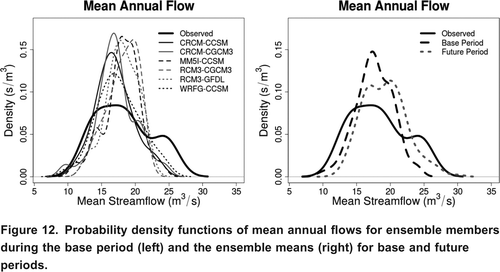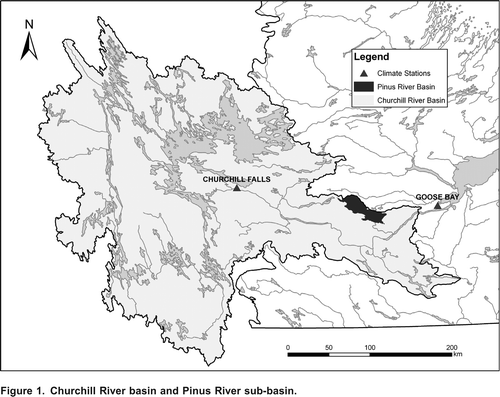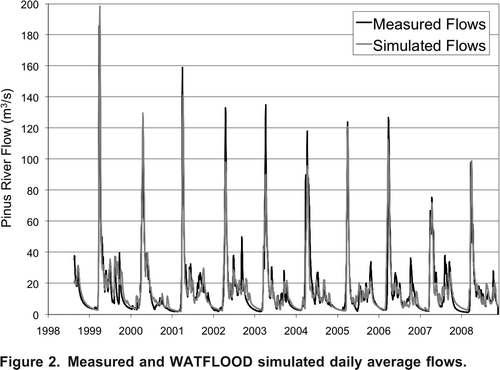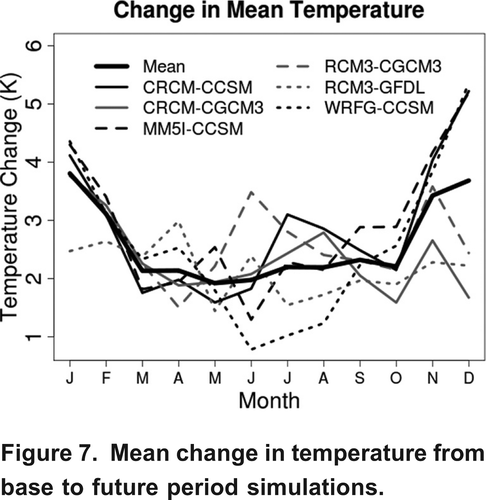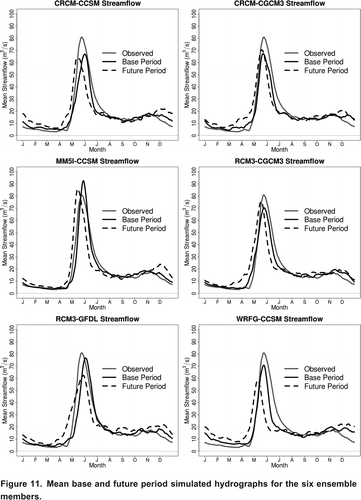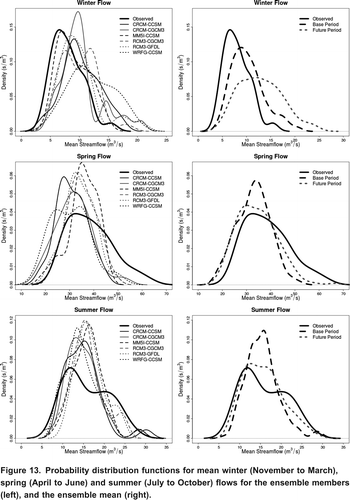Figures & data
Table 1. Details of NARCCAP's RCMs and GCMs.
Table 2. NARCCAP ensemble members used.
Figure 3. Examples of base period simulated precipitation bias corrections for the CRCM-CGCM3 ensemble member (left) and a comparison of normalized precipitation bias for the range of models (right).
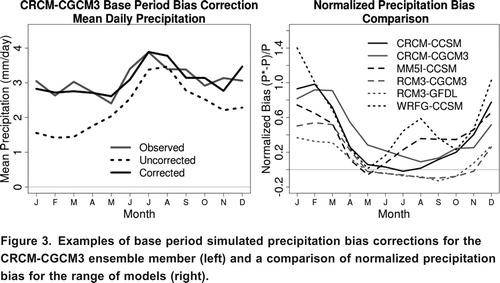
Figure 4. Examples of base period simulated temperature bias corrections for the CRCM-CGCM3 ensemble member (left) and a comparison of normalized temperature bias for the range of models (right).
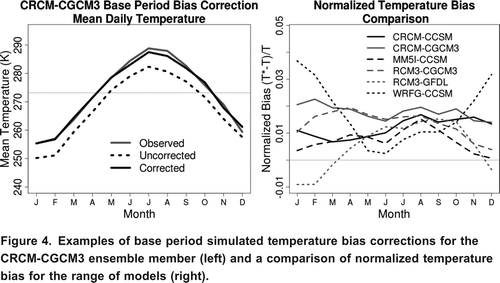
Figure 5. Changes in daily precipitation from simulated base period to future period. Ensemble mean represented by thick black line.
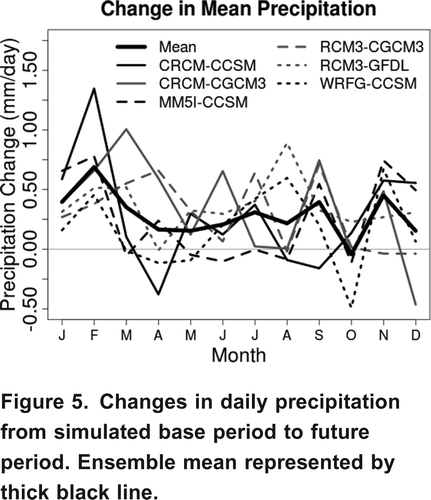
Table 3. Mean monthly and annual changes in precipitation rates.
Figure 6. Probability density functions for ensemble daily mean (top left), five-day mean (top right), monthly mean (bottom left) and annual precipitation rates (bottom right).

Table 4. Mean monthly and annual increases in temperature.
Figure 8. Probability density functions for ensemble daily mean (top left), five-day mean (top right), monthly mean (bottom left) and annual temperature (bottom right).
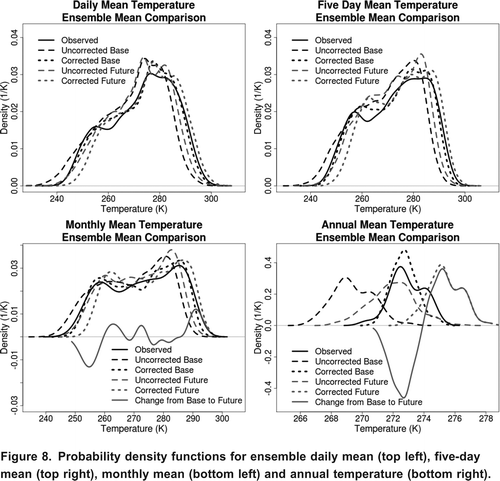
Figure 9. Examples of mean streamflow for the base (left) and future periods (right) from the corrected CRCM3-CGCM3 ensemble member. 30-year mean streamflow represented by black points.
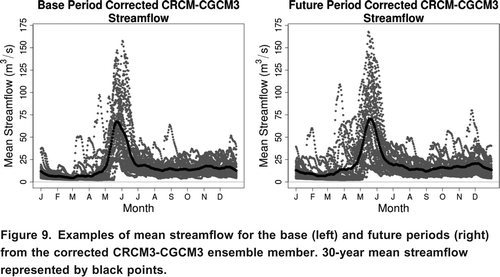
Figure 10. Comparison of 30-year ensemble mean simulated base and future period streamflow (left) and the change in 30-year ensemble mean simulated streamflow (right), from base to future period.
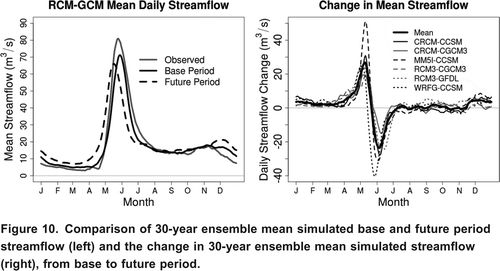
Table 5. Mean monthly and annual changes in streamflow.
Figure 12. Probability density functions of mean annual flows for ensemble members during the base period (left) and the ensemble means (right) for base and future periods.
